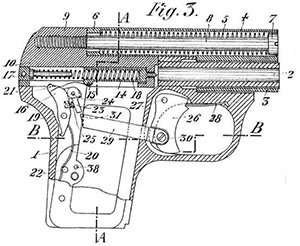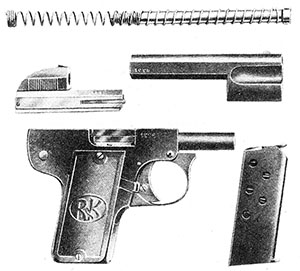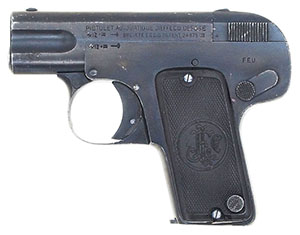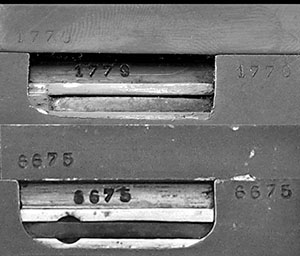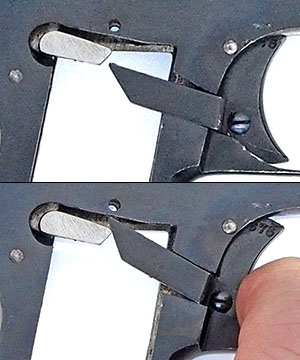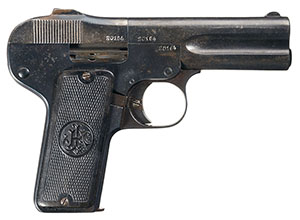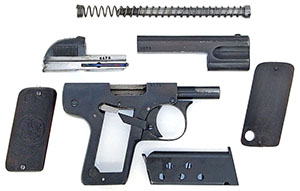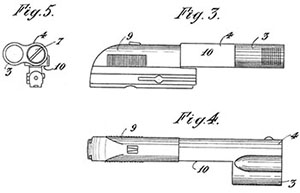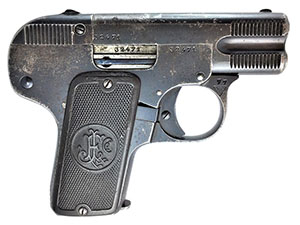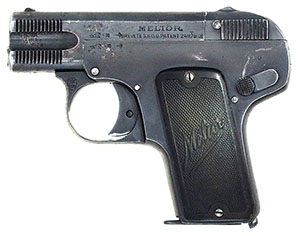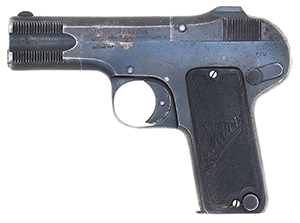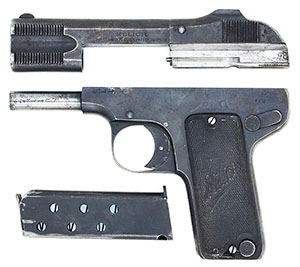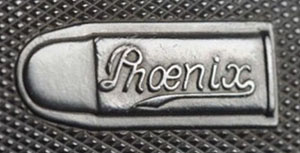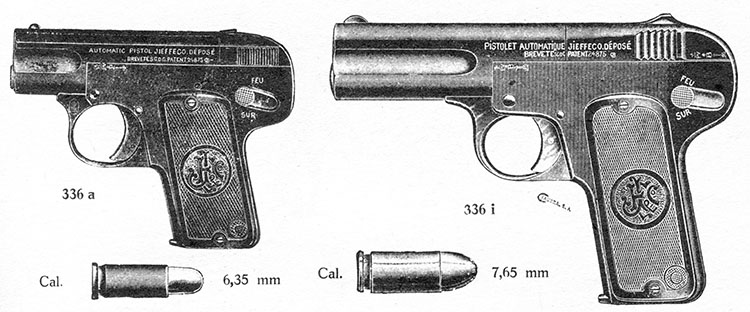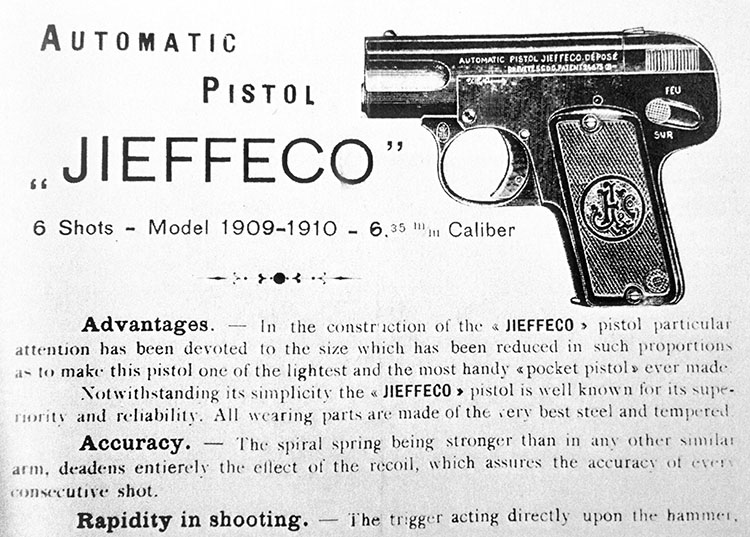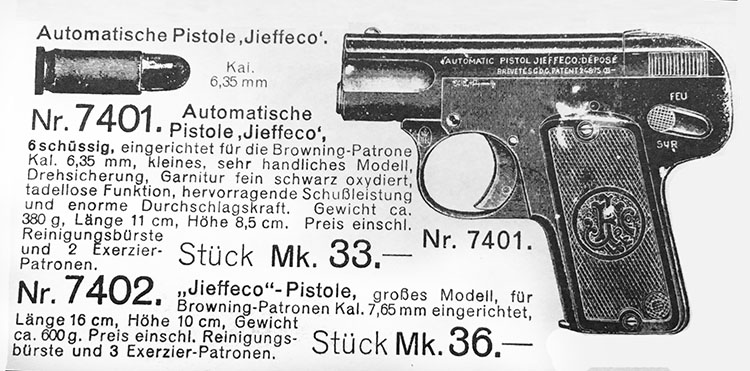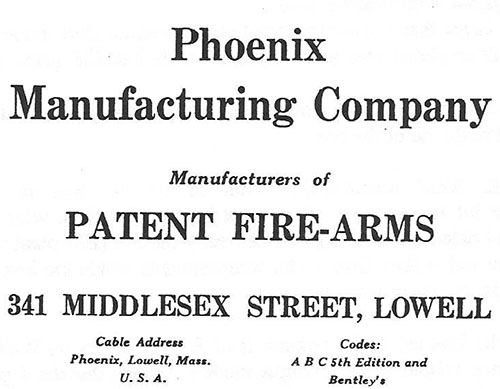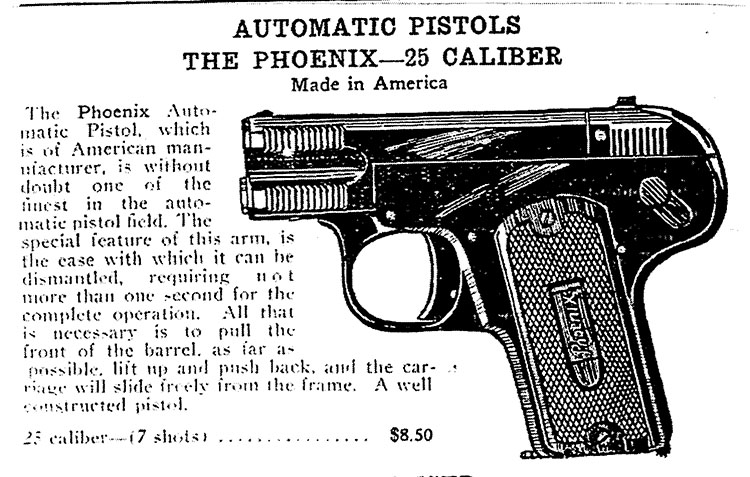 |
||||||||||||||||||||||||||||||||||||||||||||||||||||||||||||||||||||||||||||||||||||||||||||||||||||||||||||||||||||||||||||||||||||||||||||||||||||||||||||||||||||||||||||||||||||||||||||||||||||||||||||||||||||||||||||||||||||||||||||||||||||||||||||||||||||||||||||||||||||||||||||||||||||||||||||||||||||||||||||||||||||||||||||||||||||||||||||||||||||||||||||||||||||||||||||||||||||||||||||
|
|
||||||||||||||||||||||||||||||||||||||||||||||||||||||||||||||||||||||||||||||||||||||||||||||||||||||||||||||||||||||||||||||||||||||||||||||||||||||||||||||||||||||||||||||||||||||||||||||||||||||||||||||||||||||||||||||||||||||||||||||||||||||||||||||||||||||||||||||||||||||||||||||||||||||||||||||||||||||||||||||||||||||||||||||||||||||||||||||||||||||||||||||||||||||||||||||||||||||||||||
|
The Robar & de Kerckhove by Ed Buffaloe The First Rosier Patent
The patent shows a gun that is externally quite similar to the Model 1899 or 1900 FN Browning, with the recoil spring above a fixed barrel and an unlocked breech. However, upon closer examination it becomes clear that Rosier’s design carefully avoids infringing upon any of Browning’s patents. There is no reciprocating slide but instead a reciprocating bolt or breech block, and the internal design is quite different. An external transfer bar runs beneath the grip on the right side of the gun. There is no true disconnector to prevent movement of the sear when the breech block is out of battery, but instead a “Mécanisme de déclenchement”, or “release mechanism” that requires the trigger to be released and pulled again to fire another cartridge. The design consists of the frame with fixed barrel, the breech block, an upper receiver housing which serves as a sleeve for the barrel and a housing for the recoil spring, and a recoil spring guide rod which screws into the breech block to hold the gun together. Company Names and Trade Names The guns were manufactured by the firm of Robar & de Kerckhove, as evidenced by grip plates with the R&K monogram on both the early Melior and Jieffeco pistols. The full name of the company, L. Robar Fils & L. de Kerckhove, appears in a trademark certificate dated 14 January 1914 (reproduced at littlegun.be) representing the trade name ‘Melior’ over the initials ‘R.K.’ ‘Melior’ is Latin for ‘better’ and might also be translated as ‘superior’. “Jieffeco” was a trade name of Jannsen Fils & Cie, registered on 8 June 1909. The name “Jieffeco” is a French phonetic conversion of the letters ‘J’ and ‘F’, plus ‘Co’ (‘jie’ plus ‘effe’ plus ‘co’ = ‘Jieffeco’.) The early Jieffeco pistols, like the Melior, have grip plates with the R&K monogram in an oval, indicating manufacture by Robar & de Kerckhove, but these soon gave way to grip plates with a JF&Co. monogram in a circle. However, since serial numbers are contiguous, it is not believed that Jannsen was involved in the manufacture of the guns. The Adolf Frank Export Gesellschaft marketed the Jieffeco pistol under the name “Alfa Patent”, as advertised in the 1911 ALFA Catalogue. The Moritz Magnus jünger company, a well-known retailer in Hamburg, also marketed the gun under the name ‘Melior’ but with their own distinctive grip plates. Nomenclature The early version of this pistol is sometimes referred to as the Model 1907, presumably after the date of the Belgian patent, or as the Model 1908, after the date of the British patent which appears on the gun; but the early manuals for the Jieffeco and Melior both refer to the gun as the Model 1909. Additionally, an early English-language advertisement refers to the gun as the Model 1909 -1910. Based on the company usage, I have decided to refer to the early version of the gun as the Model 1909 (Type I). The later version has been variously referred to as the Model 1911 (after the Belgian patent date) or the Model 1912 (after the foreign patent dates). I have been unable to locate a manual for the later gun in order to determine how the company referred to it, but the only advertisement I have seen lists it as the “Nouveau modèle” or “new model”. Unfortunately, this is also what the later Melior and Jieffeco pistols, manufactured after the Great War, were called. So, rather than give it a separate model number, I have decided to refer to the late version as the Model 1909 (Type II). After Robar introduced a new line of pistols around 1920, the new guns were naturally referred to as the “New Model”, and since that time the Model 1909 (in either Type I or Type II configuration ) has been referred to as the “Old Model”. The Model 1909 (Type I) Melior and Jieffeco in 6.35mm
The gun is substantially as described in the above patent. The bolt or breech block reciprocates in the frame and has an upper extension into which the recoil spring guide rod is screwed. This extension has 15 fine triangular-cut vertical serrations in a raised panel at its rear to assist in retracting the breech block to chamber a cartridge. The striker and its spring are held captive in the breech block by a pinned plug at the rear.
The lockwork is somewhat simplified compared to that described in the patent. There is no spring-loaded release mechanism attached to the sear. Instead the forward nose of the sear is pushed up by the end of the transfer bar, which then passes beyond it and cannot re-engage until the trigger is released and pulled again. The manual safety locks the sear, positively preventing release of the striker. There is no magazine safety. The ejector has a pin on the back side that is press-fit into a hole in the left side of the frame just above the grip plate. The magazine release is a button at the bottom rear of the left grip. The magazine is of standard manufacture, holds six cartridges, and has five holes for viewing cartridges on each side. There is a half-moon cut-out on the right side about 5mm up from the baseplate. The grip plates are of checkered horn. Early grip plates for both the Melior and Jieffeco feature the R&K monogram in an oval in the middle of the grip. Some grip plates for the Melior pistol feature an MjrM monogram with an old-style pistol beneath it in a circle in the middle of the grip, the logo of the Moritz Magnus jünger company of Hamburg. Later grip plates for the Melior pistol show the word “Melior” written in script at an angle in the middle of the grip. Later Jieffeco grip plates feature the JF&Co. monogram in a circle in the middle of the grip. The early inscription on the upper receiver housing of Melior pistols is in all capital serif italic characters on one line: “MELIOR” or sometimes all capital non-italic serif: “MELIOR” Later Melior inscriptions are in all capital serif characters, with a patent notice in all capital sans-serif characters on a second line: MELIOR “Brevete” is French for “patent” and “S.G.D.G.” is a standard French abbreviation of “sans garantie du gouvernement”, meaning “without government guarantee”. The patent number given is that of the British patent of 1908. Markings for the manual safety are in French: FEU (Fire) and SUR (Safe). The inscription on the Jieffeco pistols is in all capital sans-serif characters on two lines: PISTOLET AUTOMATIQUE JIEFFECO DEPOSE A small number of Jieffeco pistols are marked in German. These are likely the guns advertised in the 1911 ALFA catalogue as the ALFA Patent pistol. I have been unable to examine one of these pistols to establish the exact format, but the inscription is: SELBSTLADE PISTOLE The serial number is stamped on the right side of the gun: on the frame in front of the ejection port, on the recoil spring housing just above the rear of the ejection port, and on the forward extension of the breech block visible through the ejection port. The serial number is also stamped, in whole or in part, on many of the small parts such as the trigger and the magazine release button. A group of collectors on the luger.gunboards.com forum have documented serial numbers for these pistols. It appears that serial numbers may have begun at 1000. The early guns are all branded as Melior through approximately serial number 5000, after which we begin to see mixed Jieffeco and Melior pistols. The highest serial number documented thus far for the Model 1909 (Type I) in 6 .35mm is 12166, while the lowest serial number for the Model 1909 (Type II) in 6.35mm is 12860. If you can help refine these numbers, please either write to me or join the forum and share your serial number and a description of your gun.* Based on the serial numbers collected thus far, I estimate that approximately 11,000 Model 1909 (Type I) pistols were made in 6.35mm (combined total of Melior and Jieffeco). The Model 1909 (Type I) Melior and Jieffeco in 7.65mm
One reason to believe that the 6.35mm pistols may have been manufactured for a time before 7.65mm production began is that the earliest 7.65mm pistols we have recorded are branded Jieffeco, whereas 6.35mm Jieffeco production appears to have come after approximately 4000 Melior pistols had been produced. But that is in no way definitive- -production in both calibers could, in theory, have commenced simultaneously. However, we have not documented any 7.65mm pistols with the extractor design seen on the early 6.35mm Melior pistols. The 7.65mm pistol is simply a scaled-up version of the 6.35mm, and looks remarkably like the 1899/1900 Browning pistol. Like the smaller gun it has 15 vertical triangular-cut serrations in a raised panel on the bolt. The magazine holds seven cartridges and has six holes for viewing cartridges in each side. Grip plates are made of checkered horn. Jieffeco grip plates feature the JF&Co. monogram in a circle in the middle of the grip. Melior grip plates feature the word “Melior” written in script at an angle in the middle of the grip. The Model 1909 (Type I) Jieffeco in 7.65mm is marked on the left side of the recoil spring housing in all-capital sans-serif characters: PISTOLET AUTOMATIQUE JIEFFECO DEPOSE The top edge of the frame is marked on the left side in all-capital sans-serif characters: BREVETE S.G.D.G. PATENT 24875.08 The Model 1909 (Type I) Melior in 7.65mm is marked on the left side of the bolt in all-capital serif characters: MELIOR The top edge of the frame is marked on the left side in all-capital sans-serif characters: BREVETE S.G.D.G. PATENT 24875.08 The serial number is stamped on the right side of the gun: on the frame above the trigger guard, on the rear of the recoil spring housing, and on the upper extension of the breech block. The serial number is also stamped, in whole or in part, on many small parts such as the trigger and the magazine release button. Field Stripping the Model 1909 (Type I)
Note: When reinstalling the bolt, you must pull the trigger to lower the sear. The Second Rosier Patent
The Third Rosier Patent
The Model 1909 (Type II) Melior and Jieffeco in 6.35mm
The magazine release is moved to the base of the grip, and is pressed inward from the rear to release the magazine. The magazine has a horizontal slot on the back about 2cm up from the baseplate. Replacement magazines can usually be recognized because they have both the half-moon cutout and the horizontal slot, so they will fit either model. Most grip plates continue to be of checkered horn with either the JF&Co monogram in a circle, or an MjrM monogram in a circle (the logo of the Moritz Magnus junr . company of Hamburg), or the word Melior in script. Because the magazine release has been moved from the left grip, it is no longer necessary for the left grip plate to have a hole in it; however, apparently the company already had a great many grip plates made with the hole, or with a place where the hole could be drilled, so many Jieffeco grip plates appear to either have the hole filled or a blank space in the checkering where the hole might have been drilled. Very late grip plates are of hard rubber instead of horn, with a circle at the bottom of the left plate where the old button safety would have been--in this circle is molded 635. The inscription on the Model 1909 (Type II) Melior is identical to that of the late Model 1909 (Type I), in all capital serif characters, with a patent notice in all capital sans-serif characters on the second line: MELIOR The Inscription on the Model 1909 (Type II) Jieffeco is also identical to that of the Model 1909 (Type I): PISTOLET AUTOMATIQUE JIEFFECO DEPOSE Serial numbers recorded begin at 12860 and run to 19693, and another range begins at 30420 and runs to 36489. From these serial numbers I estimate that probably about 14,000 Model 1909 (Type II) pistols were made in 6.35mm (both Melior and Jieffeco combined). The Model 1909 (Type II) Melior and Jieffeco in 7.65mm
A few of the early 7.65mm Model 1909 (Type II) pistols retain the button release for the magazine on the left grip, but the majority will be found to have the release on the bottom of the grip. Grip plates continue to be made of checkered horn, with the same logos as the Model 1909 (Type I) pistols in 7.65mm, with some late grip plates featuring a round circle on the left plate (where the magazine release hole would have been), stamped 765. The inscription on the recoil spring housing of the 7.65mm Model 1909 (Type II) Melior is in all capital serif characters, with a patent notice in all capital sans-serif characters on the second line: MELIOR The inscription on the recoil spring housing of the 7.65mm Model 1909 (Type II) Jieffeco is in all capital sans-serif characters: PISTOLET AUTOMATIQUE JIEFFECO DEPOSE The Model 1909 (Type II) pistols in 7.65mm continue to be in the 2xxxx serial number range, with examples recorded falling between 22269 and 27306. Estimated production in 7.65mm is just over 5000 pistols (Melior and Jieffeco combined). Production of pistols by Robar & de Kerckhove is believed to have ended with the defeat of Belgium by German forces in August of 1914, or soon thereafter.
Note: When reinstalling the bolt, you must pull the trigger to lower the sear.
I have not been able to find out much about the Phoenix pistols, but the story seems to be that after World War I Robar wished to manufacture a new gun which the company had patented in 1914, but had quite a few parts left over from the 6.35mm Model 1912. They sold these parts to an entity in Lowell, Massachusetts named Phoenix Manufacturing Company. It is also possible that Robar sold
The exact date of these pistols is uncertain, but the company was listed in the Lowell, Massachusetts city directory for 1920 and 1921. Interestingly, a “Henry Rosier of Lowell Massachusetts” was filing firearms patents in the U.S. in 1922 and 1923 (see U.S. patent numbers 1,454,454 and 1,520,671). This evidence makes it probable that Henri Rosier came to the U.S. soon after World War I, sold his patent to the Phoenix company in Lowell, Massachusetts, and may have lived in the city for a while and worked in the firearms industry, perhaps even assisting Phoenix Manufacturing in setting up their assembly line. The J. Galef catalogue for 1921 does not list the Phoenix pistol, but another J. Galef catalogue, tentatively dated 1926, does. Please write to me if you can provide further photographs or information about the Phoenix pistols.* The guns are nearly identical to the Model 1909 (Type II) Melior and Jieffeco pistols in 6.35mm, except they have grip plates of checkered hard rubber with a downward-pointing cartridge with Phoenix written on it. The bolt has 10 coarse triangular-cut serrations, and the recoil spring housing has 14. The left side of the recoil spring housing is marked in all-capital sans-serif characters as follows: ̶ PHOENIX ̶ The serial number is on the right side on the frame and on the recoil spring housing, just in front of the ejection port. Serial numbers recorded thus far are between 106 and 1018.
* Please write to edbuffaloe@unblinkingeye.com if you can help clarify details, provide photographs, advertisements, or other information about these pistols. Copyright 2018 by Ed Buffaloe - All rights reserved. |
||||||||||||||||||||||||||||||||||||||||||||||||||||||||||||||||||||||||||||||||||||||||||||||||||||||||||||||||||||||||||||||||||||||||||||||||||||||||||||||||||||||||||||||||||||||||||||||||||||||||||||||||||||||||||||||||||||||||||||||||||||||||||||||||||||||||||||||||||||||||||||||||||||||||||||||||||||||||||||||||||||||||||||||||||||||||||||||||||||||||||||||||||||||||||||||||||||||||||||
|
||||||||||||||||||||||||||||||||||||||||||||||||||||||||||||||||||||||||||||||||||||||||||||||||||||||||||||||||||||||||||||||||||||||||||||||||||||||||||||||||||||||||||||||||||||||||||||||||||||||||||||||||||||||||||||||||||||||||||||||||||||||||||||||||||||||||||||||||||||||||||||||||||||||||||||||||||||||||||||||||||||||||||||||||||||||||||||||||||||||||||||||||||||||||||||||||||||||||||||
|
|
||||||||||||||||||||||||||||||||||||||||||||||||||||||||||||||||||||||||||||||||||||||||||||||||||||||||||||||||||||||||||||||||||||||||||||||||||||||||||||||||||||||||||||||||||||||||||||||||||||||||||||||||||||||||||||||||||||||||||||||||||||||||||||||||||||||||||||||||||||||||||||||||||||||||||||||||||||||||||||||||||||||||||||||||||||||||||||||||||||||||||||||||||||||||||||||||||||||||||||
|
|
||||||||||||||||||||||||||||||||||||||||||||||||||||||||||||||||||||||||||||||||||||||||||||||||||||||||||||||||||||||||||||||||||||||||||||||||||||||||||||||||||||||||||||||||||||||||||||||||||||||||||||||||||||||||||||||||||||||||||||||||||||||||||||||||||||||||||||||||||||||||||||||||||||||||||||||||||||||||||||||||||||||||||||||||||||||||||||||||||||||||||||||||||||||||||||||||||||||||||||
